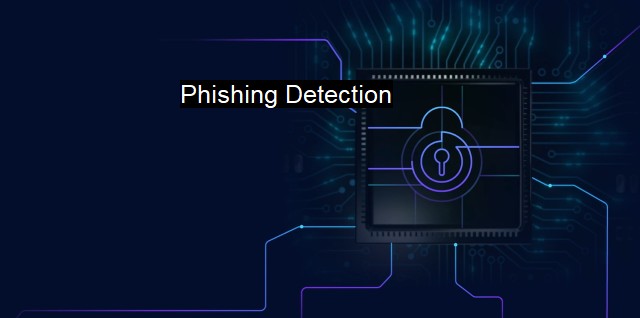What is Phishing Detection?
Preventing Phishing Attacks: The Importance of Detection in the Age of Digitalization
Phishing detection is an essential aspect of cybersecurity measures designed to prevent unauthorized attempts to obtain sensitive information such as usernames, passwords, credit card details, and other sensitive data by posing as a trustworthy or legitimate entity. Cyber attackers typically engage in phishing through digital communication channels such as emails, voice calls, text messages, or social media platforms. They craft convincing messages or communication that prompts an individual to share confidential information or unknowingly download malware onto their device, allowing them to gain unauthorized access.Taking cognizance of the increasing sophistication of phishing attacks and the magnitude of their potential damage, multiple strategies have been devised for phishing detection in an antivirus context. Antivirus software plays a crucial role in detecting, neutralizing, and eradicating potential phishing threats.
Modern antivirus software is designed with advanced algorithmic approaches that scan and detect phishing content in real time. Many antivirus applications are equipped with robust mechanisms such as sandboxing technologies, artificial intelligence, and machine learning algorithms to identify phishing attempts by analyzing the patterns and behavior of thousands of malicious programs.
Antiviruses regularly update their threat databases. This helps in staying on top of new phishing patterns and techniques that cyber-miscreants employ. The information helps to build smarter phishing detection algorithms. if a link, attachment, or software is found to be malicious during a daily update of the threat database, antivirus software recognizes and alerts the user of the risk related to clicking/opening/installing in the future.
Simultaneously, organizations have powering phishing detection and awareness efforts employing a rich mix of technologies and strategies. Companies use a plethora of techniques to deter phishing, such as employing firewalls, Data Loss Prevention (DLP) strategies, authentication methods like two-factor, and multi-factor authentication and Secure Email Gateways (SEGs).
Human intervention additionally plays a pivotal role in phishing detection. Individuals and corporate communities continuously need education and training to promulgate awareness of phishing attempts. Learning to identify suspicious emails, socially engineered messages, or malicious attachments is half the battle in the global effort to conquer phishing.
Technologies such as Endpoint Detection and Responses (EDR) and Network Detection and Responses (NDR) tools are additionally deployed for finding and mitigating phishing attempts. EDR solutions are specifically designed to discover anyadiscriminal activity at endpoint levels such as user devices and servers. On the other hand, NDR is applied to uncover anomalous network behavior.
Another fresh approach is the use of Deception Technology in detecting phishing. Deception Technology throws the bait and subsequently traps hackers by deliberately creating a false trail.
Several browsers also have in-built phishing detection features. They alert users visiting an illegitimate or potentially harmful webpage. Often, they work by checking the visited website against a continuously updated list of known-delegitimized websites and traffics.
Phishing detection is not a one-and-done effort but a continuous process necessitating a hybrid tactic of technologies and human vigilance to ensure proactive, all-round cybersecurity. Today, phishing detection transcends beyond traditional email filters that sift through spam messages. It's increasingly becoming destination-centric as attackers are resorting to novel exploits involving infected websites along with social media manipulation. As cyber threats evolve, so too must phishing detection techniques and mechanisms. Therefore, organizations and individuals must continually stay one step ahead and adapt in this never-ending battle to protect valuable data and maintain privacy. To summarize, phishing detection is an essential cybersecurity feature embedded in diverse protection mechanisms to keep cyber attackers at bay.

Phishing Detection FAQs
What is phishing detection?
Phishing detection is the process of identifying and preventing phishing attacks, which are attempts to steal sensitive information such as usernames, passwords, and financial data through fraudulent means.How does phishing detection work?
Phishing detection works by analyzing emails and websites for common characteristics of phishing attacks, such as suspicious URLs, fake login pages, and phishing emails that mimic legitimate ones. Advanced algorithms and machine learning techniques are often used to detect and flag these threats.What are some common phishing detection techniques?
Common phishing detection techniques include spam filters, URL blacklisting, malware scanning, email authentication protocols such as SPF, DKIM, DMARC, and machine learning-based detection that uses behavioral analysis to identify potential phishing attacks.Why is phishing detection important for cybersecurity and antivirus?
Phishing detection is critical for protecting against cybercrime, as phishing attacks remain one of the most common and effective ways for hackers to gain access to sensitive information. By detecting and preventing these attacks, cybersecurity and antivirus solutions can help ensure the security of sensitive data and prevent financial losses.| | A | | | B | | | C | | | D | | | E | | | F | | | G | | | H | | | I | | | J | | | K | | | L | | | M | |
| | N | | | O | | | P | | | Q | | | R | | | S | | | T | | | U | | | V | | | W | | | X | | | Y | | | Z | |
| | 1 | | | 2 | | | 3 | | | 4 | | | 7 | | | 8 | | |||||||